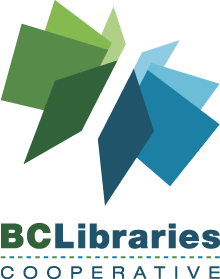WCAG explanatory links
Key resources for web accessibility are defined by the World Wide Web Consortium (W3C)
- Web Accessibility Initiative (WAI)
- In particular check out the Resources for Content Writers page
- Writing for Web Accessibility (Tips for Getting Started)
- Evaluation tools
- Planning and Managing Web Accessibility – integrate accessibility throughout the web production process, including maintenance processes.
- Web Content Accessibility Guidelines (WCAG): As of Fall 2022, the working standard for digital accessibility is WCAG 2.1 AA
- How to Meet WCAG (Quick Reference) | and a Summary from accessiblelibraries.ca
- Understanding the Four Principles of Accessibility
Toolkits
- BC government Accessibility and Inclusion Toolkit
- Canadian government Digital Accessibility Toolkit – see in particular the Personas with Disabilities for inclusive user experience (UX) design to get a better understanding of the diversity of design challenges.
- Decoda – Respectful Disability Language – British Columbia’s provincial literacy organization.
Automated testing tools
- WAVE Accessibility Evaluation tool – note that this tool will capture web development issues as well and can be overwhelming, as LibPress site managers do not have access to this development code. Be assured that the LibPress Web Developer is working to fix or has already fixed many issues.
- WebAIM Contrast Checker – this is a very quick tool to check your fonts and colours, and whether they meet the legibility threshold.
For More Information
- AccessibleLibraries.ca — a site that provides curated resources contain trusted information about best practices to help libraries serve patrons with disabilities
- Accessibility 101 for Canadian Public Library Staff: Webinar Recording | Presentation Slides
For Manitoba
The Accessibility Standard for Information and Communication requires organizations to remove barriers for people with disabilities who access information and communication. Almost one in four Manitobans have a disability, and nearly every Manitoban knows
someone with a disability, or will acquire a disability at some point in their life. There are many ways people access information and communication as a result of their differing abilities to see, hear and understand information or communicate with others. Presenting information in a variety of ways will make communication accessible for everyone.
The Accessibility for Manitobans Act (AMA) (opens in a new tab) was enacted in 2013. The AMA has two main goals:
- Goal 1: identify, prevent and remove accessibility barriers to participation
- Goal 2: make progress towards achieving accessibility in Manitoba
Manitoba Accessibility Office – Learning Portal:
- Accessible Information and Communication Standard Training Module
In this module, you will learn about The Accessibility for Manitobans Act (AMA), its five regulated accessibility standards and an overview of the requirements of the Accessible Information and Communication Standard.
Accessibility requirements
Web accessibility benefits everyone. This includes people using a slow internet connection or people with limited technological knowledge.
- web content must meet WCAG 2.1 Level AA
- the duty to notify (this means that organizations must provide notice that information, educational, and library materials are available through communication supports and alternative formats)
- feedback process & responding to requests for accessible information and communication supports
- policy documentation
Include the following on print material?
- This information is available in alternate formats on request. Please contact …
Specific requirements for public libraries
- Resource procurement – a library must consider the accessibility needs of its users when procuring or purchasing library resources (for example: NNELS/CELA, Libby has accessibility features) – however, there are exceptions to this such as if the technology is not available or if the library does not have control over the resource (EBSCO?)
- Duty to notify and inform – a library must inform its users of each library item that is accessible, and what accessible format it is provided in (example: Braille, video etc.)
- inform the public and employees that they can request information through a communication support or accessible format
- include information related to emergency procedures or public safety
- consult with the person making the request to identify a support or format that removes the barrier and provide it in a timely manner – ask what is needed!
- not charge the person making a request more than what would be charged to someone who didn’t make a request
Examples of persons who benefit from accessible information and communication include:
- people who have no vision or low vision: they may use screen readers or large print programs such as the ZoomText Magnifier/Reader
- people with learning disabilities, such as dyslexia: they may need a document in an audio format
- people with dexterity disabilities: they may use voice recognition software or a tracking ball and mouse instead of a computer keyboard
- people who are Deaf or hard of hearing: they may require information interpreted in American Sign Language (ASL)
- people with cognitive or intellectual disabilities: they may request documents in plain language
Feedback
- Organizations must have a process to receive and respond to feedback (including complaints) about accessible information and communication.
- Organizations must document resulting actions and make that documentation available in the appropriate format, on request.
- When an organization receives a request for information in an accessible format: Consult with the person making the request to identify a support or format that removes the barrier and provide it in a timely manner.
Policies
- Libraries are required to document or write down their accessible information and communication policies, including an accessible communication training policy.
- These policies are to be made publicly available, and updated when there are changes to the organization’s policies, practices, and measures respecting accessible information and communication.
Questions from me:
- is feedback system also usable for communcation support requests?
- The web content or web application relates to product labels or other product information. ??
